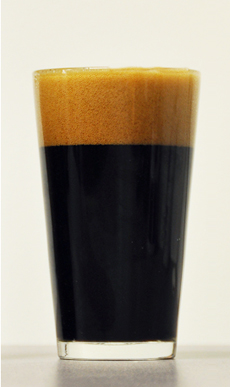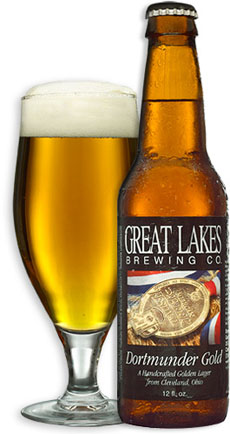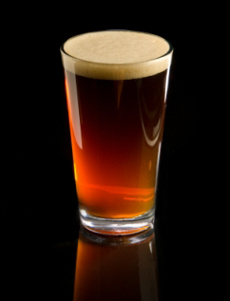Beer Glossary: A Glossary Of The Different Beer TypesPage 3: Types Of Beer Terms & Definitions for the terms From C To E This is Page 3 of an 8-page article. Click on the red links below to visit other pages. This glossary is protected by copyright and cannot be reproduced in whole or part. You are welcome to link to it. Note that there are many hundreds of official beer styles. To see the full list, visit The Brewers Association.
|
 Chocolate stout, sometimes made with real chocolate or cacao beans. Photo courtesy Brooklyn Brewery. |
|
| CASK-CONDITIONED Draft beer or ale that is neither filtered nor pasteurized and has a secondary fermentation and natural clarification in the cellar of the pub. This should produce a relatively clear brew with a light natural carbonation.
|
||
| CHERRY KRIEK See kriek.
|
||
| CHOCOLATE BEER or CHOCOLATE STOUT Chocolate beer, which can be a lager, stout or other beer variety, has the subtle flavor of chocolate and a chocolate-brown color (see photo above). This can be achieved by blending different types of roasted barley, adding real chocolate to the brew, or both. Some brewers use chocolate extract, some brew over cacao beans. Depending on the method, the beer will have a greater or lesser intensity of chocolate flavor, but the result is a slightly sweet brew that can be enjoyed with dessert or incorporated into one. Here’s a recipe for a luscious chocolate stout float.
|
||
| CREAM ALE An American term for a very pale ale. Cream ale is an American creation, usually a blend of half lager and half golden ale. It is a good accompaniment to frankfurters and bratwurst.
|
||
| CREAM STOUT or MILK STOUT A stout containing lactose, a sugar derived from milk. Because the lactose is not fermented by the beer yeast, it remains to add sweetness and body (plus calories) to the finished beer. Cream stout is for those who want the flavor of stout without the dry astringency common (think sweet malt instead of bitter roasted malt). Also called sweet stout. See stout.
|
||
| DESSERT BEER Fruit-flavored and chocolate-flavored beers are often enjoyed with dessert. Chocolate beer and stout are growing in popularity. See chocolate beer.
|
 Pale ale (cream ale) with brick cheese on pumpernickel bread, accented with red onion and whole grain mustard (moutarde de meaux). Photo courtesy of Wisconsin Milk Marketing Board. |
|
| DOPPLEBOCK or DOUBLE BOCK Dopplebock is German for extra-strong—around 7.5% alcohol by volume, or stronger. It is a bottom-fermented beer, tawny or dark brown in color. It’s a southern Germany spring specialty, seasonally brewed in March and April. See also bock and triple bock.
|
||
| DORTMUNDER-STYLE LAGER or DORTMUNDER EXPORT In the mid-19th century, several breweries in the city of Dortmund, Germany, began brewing beers in a new manner, switching from what had been dark malt that made dark beer, to the more expensive pils malt that made a gold lager (the Kronen brewery was the first to make the switch, in 1842). The new bottom-fermenting pale lager quickly gained popularity and became the main product of the industrial breweries founded in Dortmund in the second half of the 19th century. Initially, the beer was brewed at two strengths, Lagerbier and Export; but Export, the stronger beer, proved more popular and became known as Dortmunder Export. It is a well-balanced beer, with neither malt nor hops dominating. It complements most foods, and can be served with lighter fare such as salads, fish and chicken.
|
||
| DUNKELWEIZEN A dark version of a wheat beer (“dunkel” is the German word for dark).
|
 Dortmund-style lager. Photo courtesy of Great Lakes Brewing Co. |
|
| DRAFT BEEF Beer drawn from a keg. Bottled or canned beer labeled “Genuine Draft” implies that it, like most beer pumped from kegs, is unpasteurized. However, it is sterile filtered for longer shelf life.
|
||
| DRAUGHT The British spelling of draft. It is pronounced “draft.”
|
||
| DRY BEER Adapted and named by the Japanese after the popular German beer, Diat Pils, a low-carb Pilsner fermented to higher alcohol. American Dry Beer has standard alcohol levels, little taste and no finish.
|
||
| EISBIER or ICE BEER A higher-alcohol beer produced by chilling it below 32°F (0°C) and filtering out the ice crystals that form.
|
||
| ENGLISH BEER English beer styles include barley wine, bitter, brown ale, imperial stout, India pale ale (IPA), mild ale, old ale, porter and stout. | ||
| ENGLISH BITTERS See bitters.
|
||
| ENGLISH PALE ALE or INDIA PALE ALE Pale Ale was brewed as early as the 1780s, a domestic variation of the German Oktoberfest ales. The style, characterized by clean nutty malts and spicy herbal hops, was easily paired with English foods and cheeses and became very popular. In the late 18th century, an ale was needed that could survive the long trip from the England to India. Brewers added more hops, thus creating the style known as India Pale Ale (IPA) and later, English Pale Ale. According to BeerAdvcate.com, English Pale Ale originated in Burton-on-Trent, a town on the River Trent in Staffordshire (central England). The local hard water enhances the bitterness of the English hops. The ale ranges from golden to reddish amber in color, with a mix of buttery, earthy, fruity, hoppy, and malty aromas and flavors. American brewers have adapted the style to an even hoppier American Pale Ale. |
 English Pale Ale. Photo courtesy LearnHowToMakeBeer.com. |
|
|
Continue To Page 4: Terms Beginning With F To K
|
||
Last Updated Apr 2018
© Copyright 2005-2025 Lifestyle Direct, Inc. All rights reserved. All images are copyrighted to their respective owners.